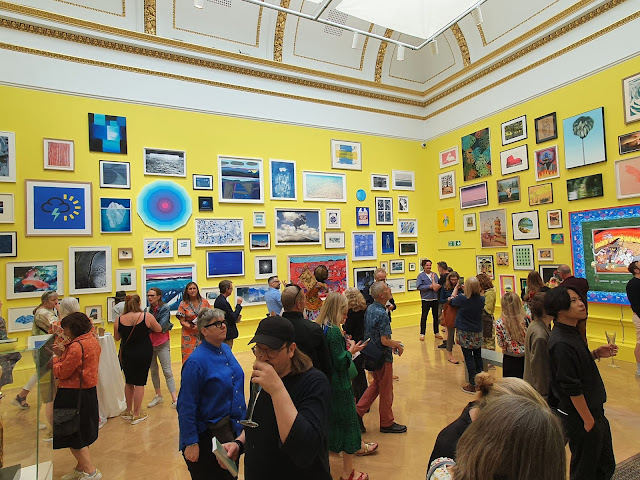Projects by Joanna Rucklidge
This blog captures visual communication projects, past and present, by Joanna Rucklidge, tackling issues around waste, re-use and value of resources.
Tuesday, 5 July 2022
Plastic 101, 2022
A family of four collected all of their plastic waste for one week. This drawing captures the 101 various types of single-use packaging disposed of; each destined for recycling or incineration. This drawing seeks to remember and make visible these items that are usually removed from our home without much attention. This artwork was a personal response to a Greenpeace initiative inviting UK residents to collect and share data generated from collecting plastic waste for 7 days in May 2022 – ‘The Big Plastic Count’.
Seaworthy Vessels, 2022
This piece was exhibited at the Royal Academy Summer Exhibition 2022. Coordinated by Royal Academician Alison Wilding, exhibiting works made by everyone from emerging to internationally renowned artists, all exploring this year’s timely theme of ‘Climate’. Whether as a crisis or opportunity, or simply our everyday experience, it is an all-embracing subject.
Swimming in Plastic, 2022
200 pieces of plastic litter found beside the River Don have been reproduced using monoprinting for a site specific installation at Sheffield Adventure Film Festival, 2022. This installation is designed to give the illusion of looking through the windows as if underwater, viewing the abundance of floating plastic waste. Single use plastics, part of a disposable culture of convenience, easily end up as litter due to their lightweight nature, and durable qualities. Even though Sheffield is land-locked, plastic litter can join waterways, and eventually reach the sea. These prints capture the objects in their lost state; now reclaimed they will be recycled. However, In both their production and disposal, they will contribute to greenhouse gas emissions. Waste reduction, through re-use and minimisation, needs to be better promoted and facilitated. ShaFF inspired this project through its screening of “If You Give a Beach a Bottle” directed by Max Romey. His film highlights that “153, 846 tonnes of new marine debris is added to the ocean every week”.
Sunday, 19 December 2021
Rubbish Prints, 2021
 |
'Boxed-in' Found letterforms from the paper recycling bin |
 |
| 'Loo-nar Cycle' - the average person uses 8 toilet rolls a month. Printed with toilet roll card. |
 |
| 'Tetra Tetra' - using tetra pak surface for collograph printing |
 |
| 'Tetra Pak Monument' - observational print |
 |
| 'Pie in the Sky' - 3 colour risograph, representing 3 different disposable materials |
 |
| 'Pie Cases' - silver embossed prints of disposable aluminium |
Monday, 19 July 2021
Sunday, 19 July 2020
Ecological Footprint Project
Extracting from just one month’s worth of glass, metal, card and plastic recycling generated in the home, I placed the items on the paving outside my house, and used them as stencils to capture their trace. A record of the resources used, and despite their disposal, me and my family are reminded of our ‘ecological footprint’ as we repeatedly walk across the imagery of the resources spent. An 'ecological footprint' is defined as "the impact of a person or community on the environment, expressed as the amount of land required to sustain their use of natural resources". [I used discarded spray paint donated by the local school].
Tuesday, 31 March 2020
Ego to Eco: we are nature
The Ego to Eco project was created by Joanna Rucklidge (Visual Communicator) and Elizabeth Freeman (Eco-psychologist) who share a mutual interest in work about nature connection, environmental issues and wellbeing. They wanted to engage in cross-disciplinary and transformative educational research to create a new way of engaging students with nature, the environment and wellbeing, whilst also enhancing the student experience.
The project was designed to provoke a psychological transformation among a group of visual communication students. Nature was used as a subject, an experience and a concept to allow students to explore the significance it had to them and to society over a series of creative tasks. These involved writing, image making, time in nature, discussion, research and finally creating an outcome for an audience.
Subscribe to:
Posts (Atom)

















